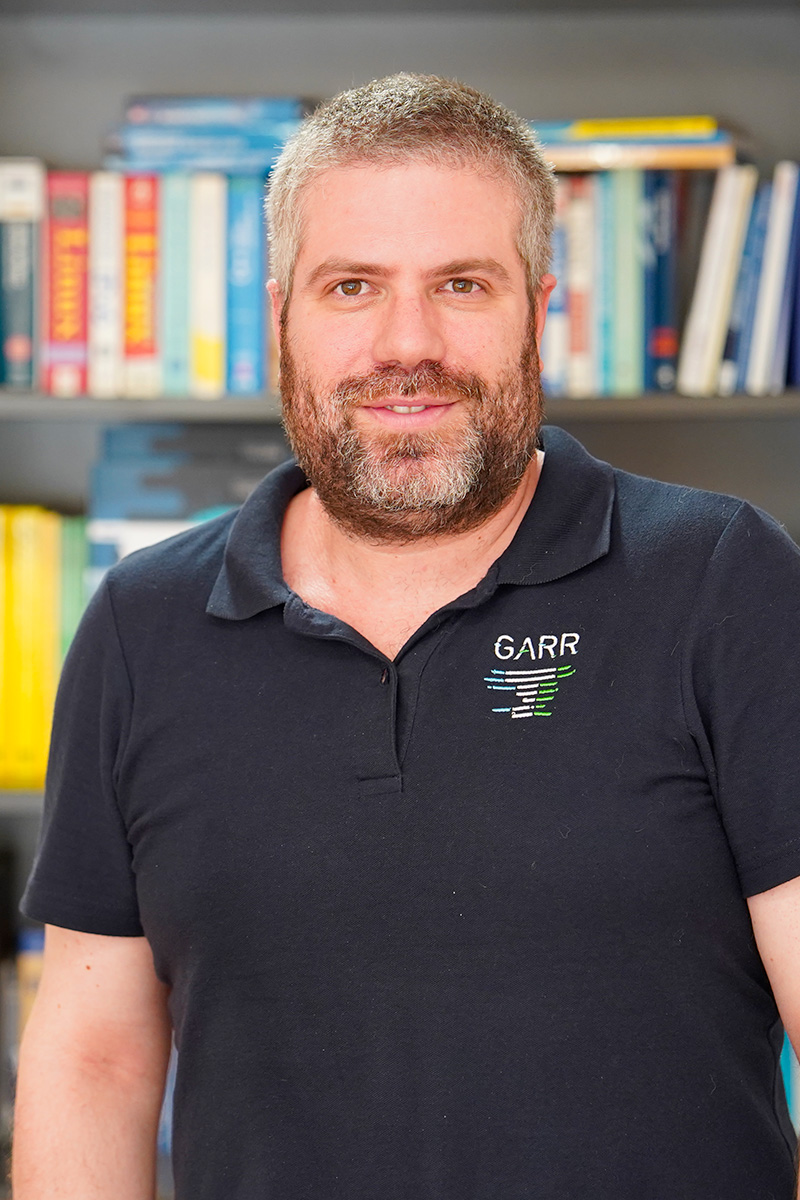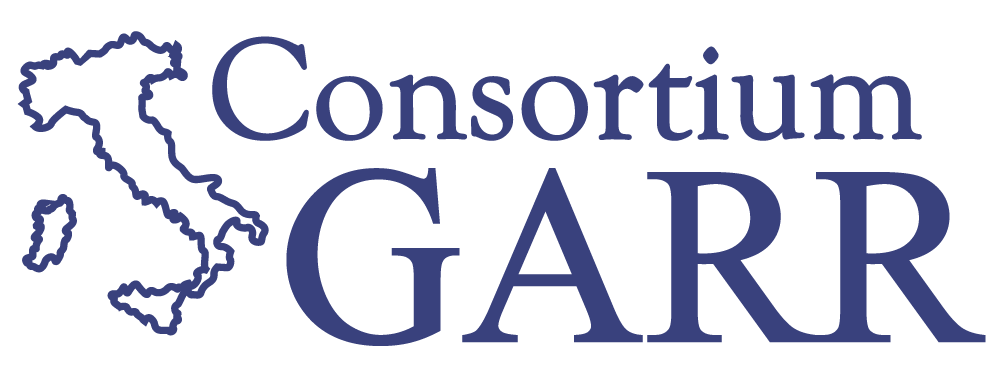Network Operations Center - NOC
Network Operations Center
NOC
Contacts
monday - friday | 8:00 - 20:00
+06 4962 2550
Other contacts
NOC
+39 06 4962 2550
Emergency phone number for switchboard failure:
+39 06 8400 8400
NOC (Network Operations Center)
The GARR service is responsible for managing and operating the network infrastructure, handling fault management, activating new connections, and collecting and publishing traffic statistical data.
The GARR NOC is responsible for managing the GARR network infrastructure and ensuring its efficient operation.
FAQs
FAQ
Chi può contattare il NOC ?
Solo gli APM (Access Port Manager) della rete GARR possono contattare direttamente il NOC attraverso i riferimenti indicati nella pagina Contatti.
I singoli utenti GARR che desiderano segnalare problemi sulla rete sono invitati a fare riferimento al proprio APM.
Un APM che desidera riportare un problema sulla rete puo' contattare il NOC possibilmente via e-mail, o comunque utilizzando uno dei modi sopra indicati.
Come posso riportare un problema sulla rete?
Un APM (Access Port manager) che desidera riportare un problema sulla rete puo' contattare il NOC possibilmente via e-mail, o comunque utilizzando uno dei modi indicati nella pagina contatti
Posso diventare un APM / essere inserito nella lista degli APM?
Un APM che desidera riportare un problema sulla rete puo' contattare il NOC preferibilmente via e-mail, o comunque utilizzando i riferimenti presenti nella pagina Contatti.
La comunicazione della lista degli APM viene fatta al NOC dalla direzione del Consortium GARR; eventuali modifiche a tale lista non sono quindi di competenza del NOC e devono essere richieste alla direzione attraverso i contatti GARR.
È possibile collaborare con il NOC indicando suggerimenti, evoluzioni, progetti, etc. legati ai compiti del NOC, inviando una e-mail.
Nei limiti delle possibilità logistiche, il GARR è disponibile a concordare con gli APM la organizzazione di riunioni, corsi o specifiche consulenze.
Gli APM interessati possono contattare il GARR attraverso i contatti GARR.
Un APM (Access Port manager) che desidera riportare un problema sulla rete puo' contattare il NOC possibilmente via e-mail, o comunque utilizzando uno dei modi indicati nella pagina contatti
Vorrei attivare IPv6, cosa devo fare?
L'organizzazione che vuole richiedere l'abilitazione di IPv6 sul proprio link di accesso a GARR, deve farne esplicita richiesta tramite un messaggio email dell'APM (Access Port Manager) al NOC di GARR. Verrà contattato in seguito per una semplice operazione, la configurazione di IPv6 sul link di accesso, verificandone contestualmente il buon esito. L'operazione tipicamente non ha impatto sull'inoltro dei pacchetti IPv4.
All'atto dell'attivazione, l'utente dovrà aver già configurato IPv6 sul proprio router di accesso e sulla propria LAN.
Il GARR NOC è disponibile a fornire assistenza per quanto riguarda le informazioni necessarie all'attivazione di IPv6 sul proprio router di accesso e ad indicare tutta la documentazione disponibile per la configurazione del nuovo protocollo sulla propria LAN e sulle workstation ad essa collegate. Sarà utile avere già configurata prima dell'attivazione del servizio una macchina (PC) già configurata con IPv6, per permettere ai tecnici GARR di diagnosticare eventuali problemi.

We manage the GARR network infrastructure to ensure its efficient operation
NETWORK MANAGEMENT
-
GINS (GARR Integrated Networking Suite)
GINS is a software suite that includes tools for network issue diagnostics and tracking, traffic statistics acquisition and visualization, and network activity reporting.
The status and performance of the GARR network are constantly monitored to ensure the most efficient service possible to the Italian University and Research community. GINS provides online public statistics and customized access for individual organizations.
-
Monitoring
It performs continuous monitoring of the infrastructure and network performance.
It analyzes and resolves issues related to network software, hardware, services, and applications.STATISTICS
-
Alarm Management and Activations
It interacts with telecommunication operators for alarm management and user connection activation at the RCs.
It tracks network incidents and maintenance through trouble tickets.Trouble Ticket System
-
Routing
It performs IP routing functions on the components of the national network infrastructure (including international links and peering connections with NAPs and ISPs) and implements routing policies on the routers in harmony with the defined topology and functionalities.
It serves as the primary point of contact for network users and NOCs of other networks.
-
MAINTENANCE & SUPPORT
It carries out scheduled maintenance, network migrations, coordinates field technician interventions when necessary, provides user support in configuring their network devices, keeps network infrastructure documentation up to date, and produces regular reports on network operation.
-
CONFIGURATIONS FOR NEW USERS
Configures Concentration Routers to accommodate User Router (UR) connections, in coordination with telecommunications operators. Interacts with the technical departments (NMC) of TLC Operators and the TAC (Technical Assistance Center) of network equipment vendors. Tests and activates new optical/IP circuits and services.
-
Security
Filter network traffic in case of security incidents and DoS attacks in close collaboration with GARR-CERT
-
Integration with European networks
It interacts with the GÉANT Pan-European network NOC for the management of international connectivity.
FAULT REPORTING PROCEDURE
The trouble ticket system allows tracking of all interventions involving service interruptions, software/hardware updates, and maintenance of GARR equipment and lines.
Trouble tickets are issued and managed by the NOC in response to:
- Identification of an issue following an alarm generated by NOC monitoring procedures
- Identification of an issue by the NOC
- Notification from an APM (Access Port Manager) of GARR network users
- Notification from telecommunication operators
The NOC monitors the evolution of the issue and provides appropriate updates following relevant status changes. Upon completion of operations, the trouble ticket is closed, reporting details about the nature of the intervention/problem.
The responsible individuals for access to the GARR network are informed of the existence of an issue by sending an email to the APM mailing list for every opening/modification/closure of a trouble ticket.
The names of the Access Port Managers (APMs) are communicated to the NOC by the GARR Directorate.
Who can contact the NOC
The GARR NOC can only be directly contacted by the GARR users' Access Port Managers (APMs).
Each APM represents a single entity/institution connected to GARR and is responsible for managing the configuration of the user router through which access to GARR is established. They also interact with the NOC whenever issues arise with the connections that affect this access.
End-to-end connectivity services to establish direct, physical, or virtual links

CUSTOMIZED CONNECTIVITY
Upon request, GARR provides end-to-end connectivity services to establish direct, physical, or virtual links between two or more locations in order to extend its data centers geographically or to segregate data from specific applications and share resources transparently.
Dedicated connectivity is a fee-based service.
-
Dark fiber
Most accesses are implemented using DF (dark fiber) between the Point of Presence (POP) and the user's site or on GARR transmission infrastructure. In case of unavailability of one of these methods, transport is carried out via Lambda Wave or through SDH mode accesses, implemented on operator circuits. -
BANDWIDTH UPGRADE
According to the requirements, it is possible to perform upgrades to 1-10 Gbps or multiples, up to 100 Gbps.
Types of connections
-
IP ACCESS
It constitutes the basic connectivity for access and is usually implemented through a point-to-point connection between the site and the nearest GARR POP. If necessary, it is possible to configure accesses on different POPs to ensure connectivity in case of a fault on the primary link. Through appropriate rerouting protocols, traffic can be moved to the functioning link. -
L3VPN
It is a Layer 3 Virtual Private Network (VPN) service. User traffic can be securely transported between the various locations of an organization over a public network. This type of service is requested, for example, by organizations with distributed offices nationwide that need to communicate securely over proprietary networks, separate from public ones. -
L2VPN
It is a Layer 2 Virtual Private Network (VPN) service. The principle is the same as L3VPN but in this case, it is applied at Layer 2 (data link). -
VPLS
It is an Ethernet-based service that provides a Layer 2 (data-link layer) point-to-multipoint virtual private connectivity (LAN-type). VPLS allows devices located in geographically distinct sites to be connected to the same Ethernet LAN network. From the device's perspective, it will appear directly connected to the remote device even though it is traversing the backbone network. -
END TO END
End-to-end connections are direct links between two points in the network. These connections can terminate either on routers, thus traversing the IP network, or on transmission equipment, thus traversing the optical network. Logically, they can be represented as a cable that interconnects two points (sites) of the network, carrying only the traffic from site A to site B and vice versa.
NOC Team
-

Asia Marinelli
-

Fabrizio Bataloni
Manager
-

Luna Nike Mora
-

Agostino Tasca
-

Tiziano Capircio
-

Marco Parisi
-

Lorenzo Ercoli
-

Manuel Petrianni


